
We’ve all experienced the reality-bending sight of two identical cars parked side by side, but when we clapped eyes on this quintet of all-black Ferrari Testarossas, we thought that there must have been a glitch in the matrix. However, this isn’t an error in our shared simulation, nor are these cars identical, because what you see here is the result of Chromecars’ near-impossible hunt for all five evolutions of the Ferrari Testarossa. We think you’ll agree, it really is a sight to behold. Now, like us, you might be thinking that there were only three versions of the Testarossa, but you’d be incorrect, so let’s take a walk down twelve-cylinder memory lane, shall we?

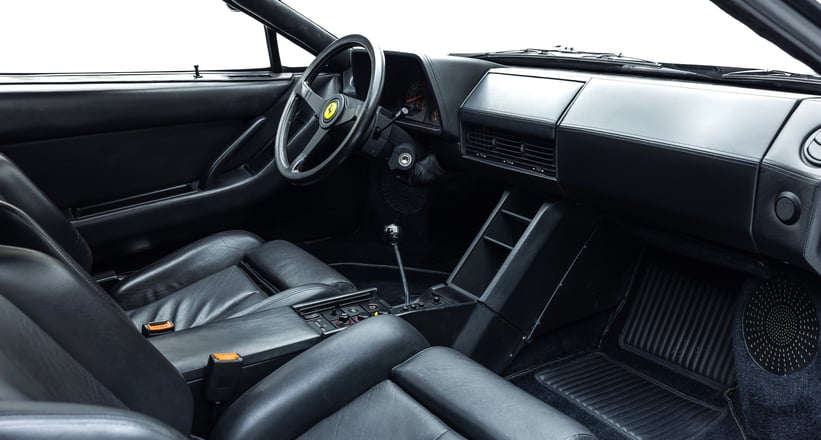
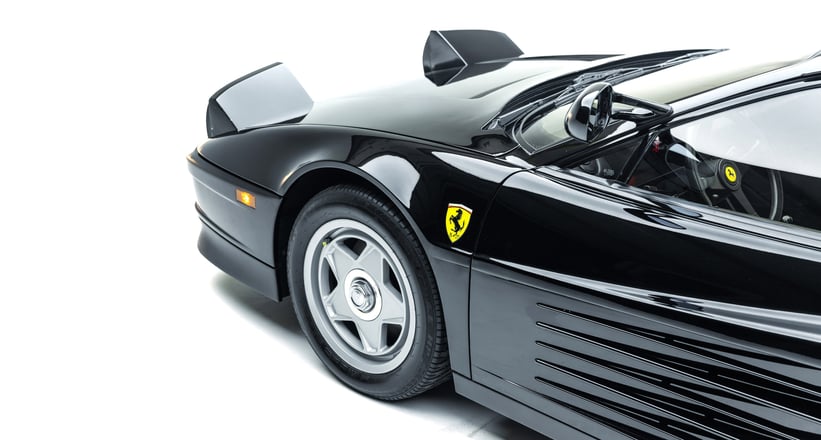
1986 Ferrari Testarossa 'Monospecchio'
The Testarossa first launched in 1984 with a few design quirks that would gradually be left behind as Ferrari’s 12 cylinder boxer evolved. There are two features that set these early Testarossas apart. The first is the single, high-mounted side mirror, which earned these cars their name, ‘Monospecchio’ or ‘individual mirror’. The story goes that this novel mirror configuration was actually the result of an engineer’s misinterpretation of road-traffic regulations, one that was quickly phased out when they realised their mistake. The second attractive aspect of these first Testarossas are the centre-lock wheels, which are perhaps our favourite of the Testarossa’s entire lineage. The black example you see here was discovered by Chromecars’ Chris in Death Valley, perhaps the worst environment we can think of to own an all black supercar, where this prancing horse must have appeared like a horizontal version of the Monolith in 2001: A Space Odyssey.
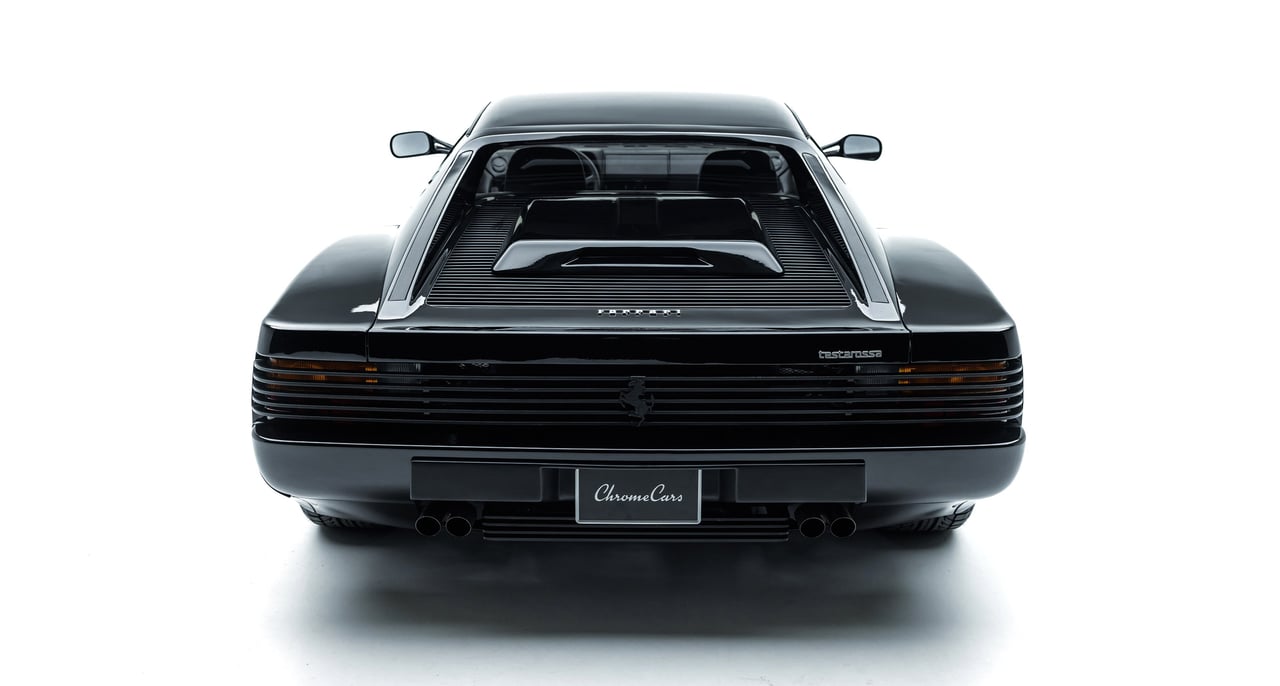
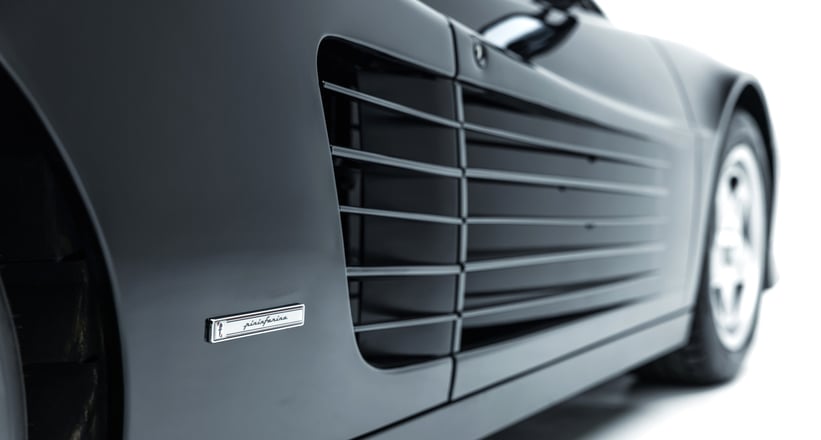

1987 Ferrari Testarossa 'Monodado'
The centre-lock wheels would persist on the second iteration of the Testarossa, which was nicknamed the ‘Monodado’ or ‘one nut’, while the single mirror was traded in for two. We think you’ll agree, both nicknames sound far better in Italian than English, but if you want a mix of the pure design of the original Testarossa with the practicality of an extra wing mirror, the ‘Monodado’ is the one to go for. Better still, this particular example is extremely low mileage and even has a few trophies to its name.
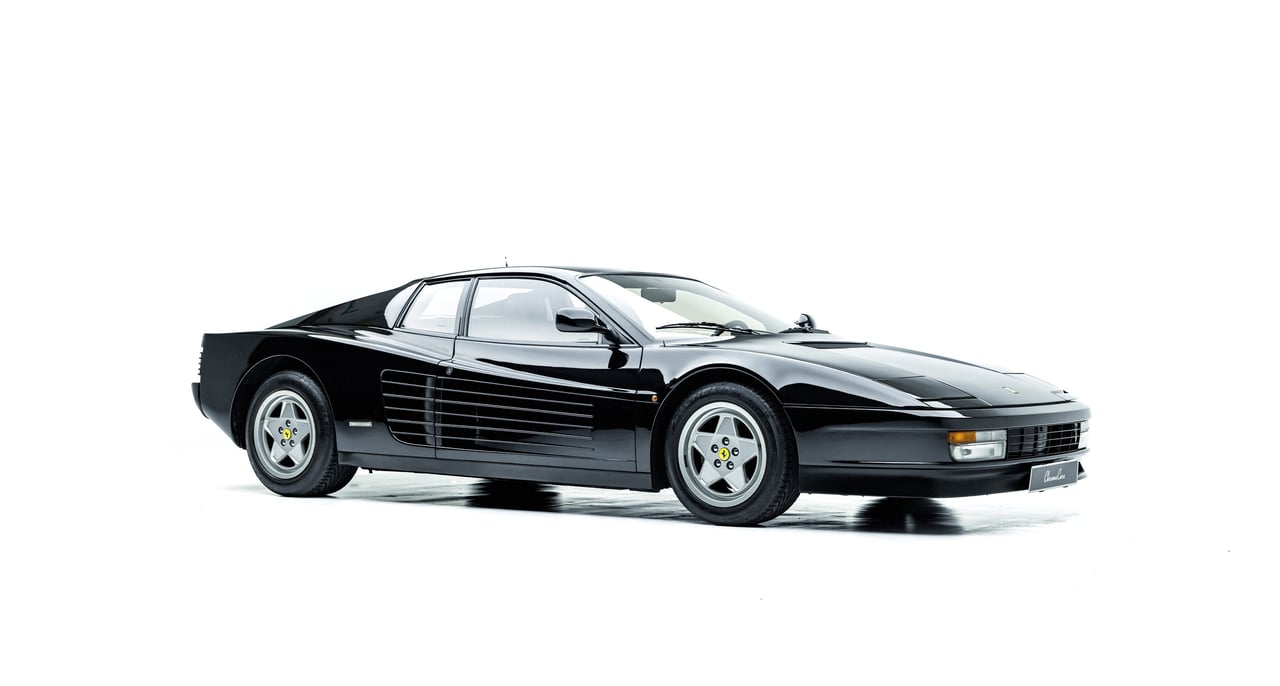
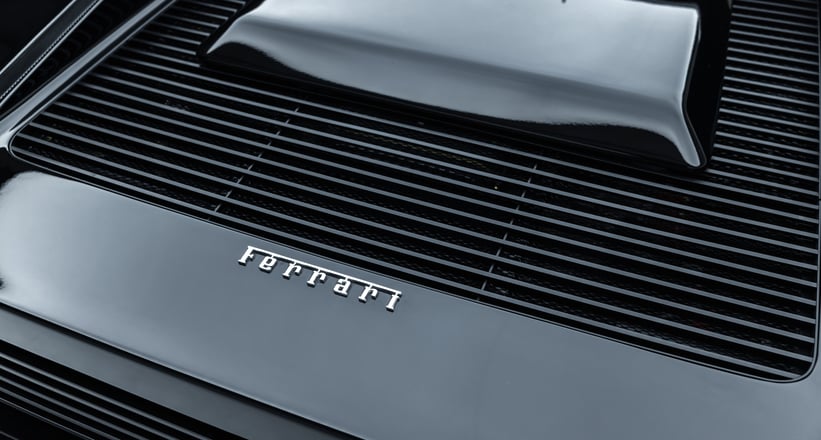
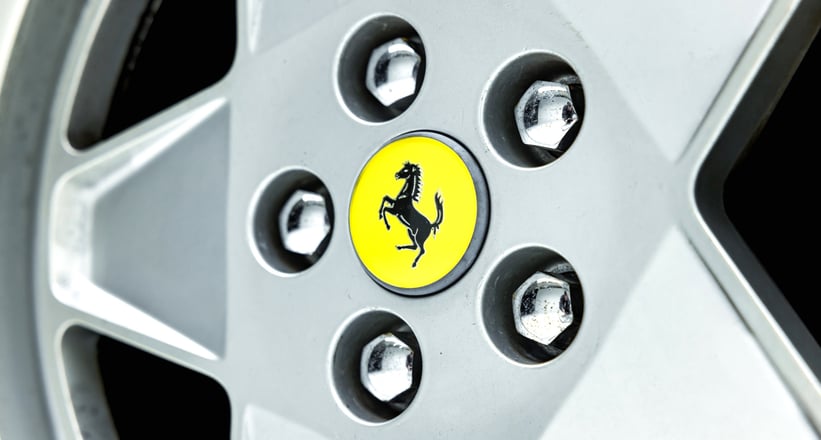
1989 Ferrari Testarossa
Then came the Testarossa’s third iteration, which was also its most numerous. These revised Testarossas featured more conventional five lug wheels and two wing mirrors. As the least rare — and therefore the easiest to find — variant of the side-straked supercar, this black example might have been overshadowed by its close relatives, but this car has a claim to fame that makes it perhaps the most interesting of the five. Rumour has it that this particular Testarossa was loaned to Diego Maradonna in Naples while the football legend was waiting for his very own black 1989 Testarossa.

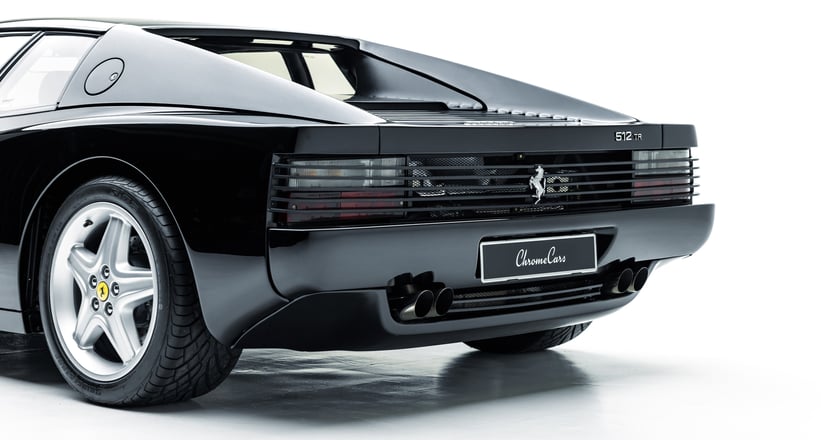

1992 Ferrari 512 TR
Moving swiftly on, the fourth iteration of the Testarossa also represents the supercar’s first official facelift. Dubbed the 512 TR, which stood for five litres of displacement, 12 cylinders and the model name ‘Testa Rossa’, it represented a major upgrade over the previous versions, which was signified by a mild restyle. The most notable changes were to the front and rear bumpers, which were updated to fit Ferrari’s new design language, as seen on the 348. If you can’t abide the design of the Testarossas final version, then this car offers the next-best driving experience.

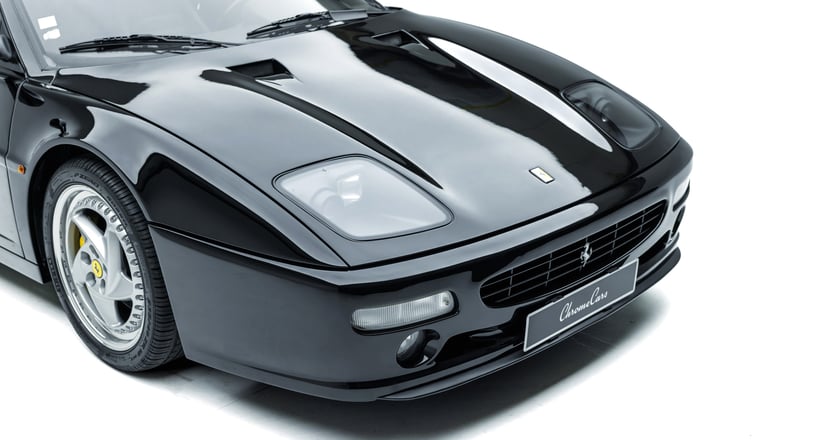

1996 Ferrari F512 M
Finally, we come to the Testarossa’s ultimate evolution, the divisive F512 M, or ‘Modificata’. Gone were the much-loved pop-up headlights, as was the sharp lines of the previous iterations. Instead, the F512 M wears a much more rounded bodykit, in keeping with the style in the 1990s. This final version is not only the fastest and most technically advanced, but it’s also the rarest, with only 502 ever built. Despite the marmite styling, if you ask us, this is the one the collectors out there should keep an eye on.
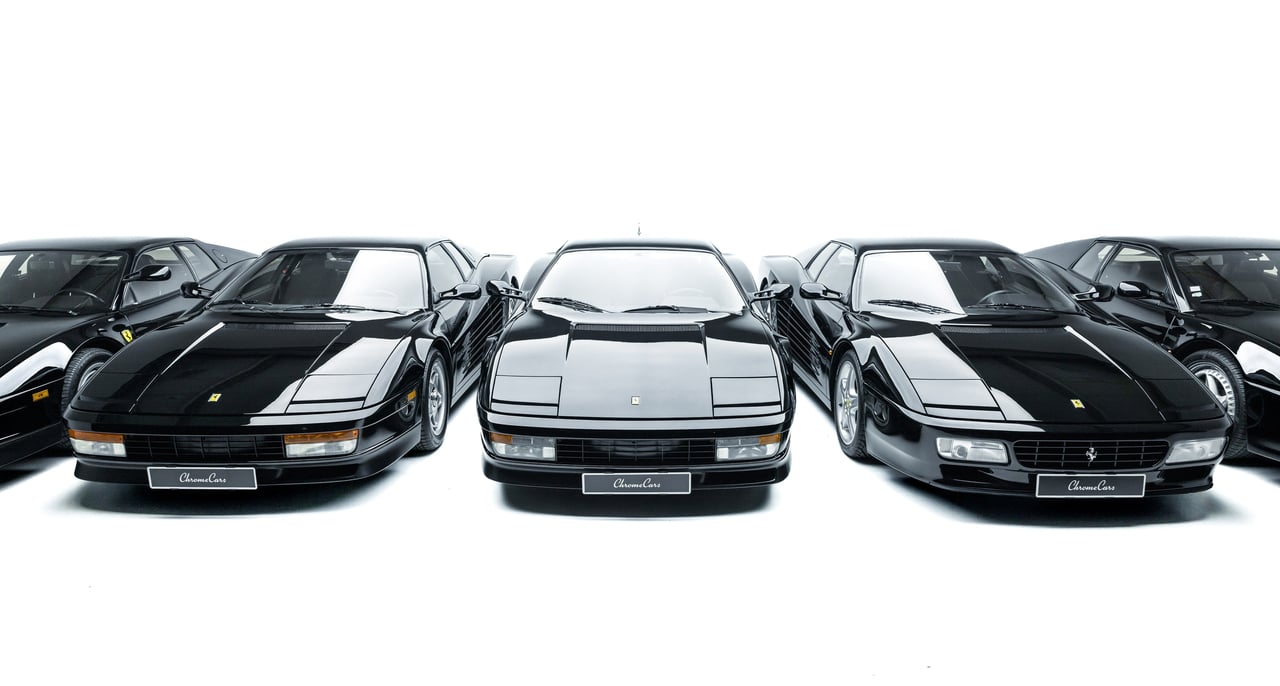
Now that you’re all caught up on Testarossa lore, you may be thinking what’s so special about the black-on-black specification? After all, in 2023, the blacked-out look seems to be the de-facto choice for enthusiasts looking to optimise the resell-ability of their collector cars. However, back when the Testarossa was king of the supercar jungle, this was not the case. Kai Nieklauson from Chromecars explains: “black was only very rarely ordered and, together with a black interior, much less often – even if this combination is very popular today. Bringing all five variants together in black/black is extremely improbable or almost impossible. For example, probably only 12 F512Ms were built in black. How many of these had the corresponding interior colour, I don’t know. Finding the ‘Monospecchio’ in black was anything but easy, too.”
So, if you’ve been searching for a blacked-out Testarossa of your own, be sure to check out RM Sotheby’s Villa Erba auction on May 20th, where all five of these iconic Ferraris will be crossing the auction block. Otherwise, if you'd like to make an enquiry, please get in touch with Stephan Knobloch from RM Sotheby's ( [email protected] ). Trust us, this isn’t an opportunity you’ll want to miss, because we suspect you’ll be waiting a very, very long time before you see such an assembly of Testarossas again. If you’d like to know more about this special quintet of prancing horses, you can read our previous interview with Chromecars here.
Photos by Keno Zache


























